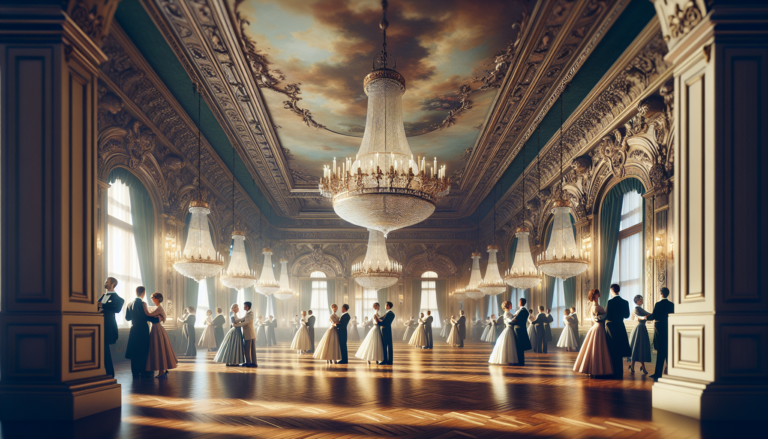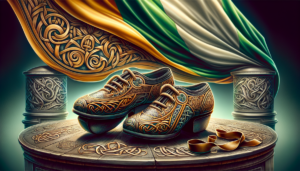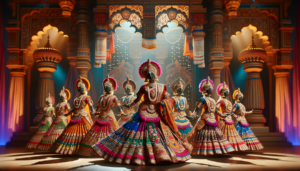Introduction to the Waltz
The waltz is one of the most iconic and beloved ballroom dances, known for its elegant movements and romantic atmosphere. This timeless dance has captured the hearts of people across generations, from its origins in the 18th century to its enduring popularity in modern times. The waltz is characterized by its distinctive 3/4 time signature and the graceful, flowing steps that sweep dancers across the ballroom floor.
The waltz has evolved over the centuries, adapting to changing musical styles and social norms, but it has always maintained its core elements of grace, elegance, and partnership. Whether performed in grand ballrooms or intimate social gatherings, the waltz continues to enchant and captivate dancers and spectators alike.
What is the Waltz?
At its core, the waltz is a ballroom dance performed in 3/4 time, with a strong emphasis on the first beat of each measure. The basic waltz step consists of a box step pattern, where dancers move in a square formation, taking one step per beat. The lead partner, typically the male, guides the follower through a series of turns, pivots, and other graceful movements, creating a sense of flow and unity on the dance floor.
The waltz is known for its close embrace, with partners holding each other in a frame that allows for smooth, coordinated movement. This intimate connection between partners is one of the key features that sets the waltz apart from other ballroom dances and contributes to its romantic appeal.
The Music of the Waltz
The music of the waltz is just as essential as the dance itself. Waltz music is composed in 3/4 time, with a strong emphasis on the first beat of each measure. This distinct rhythm creates a sense of momentum and flow that is perfectly suited to the sweeping movements of the dance.
Waltz music often features lush orchestrations, with strings, woodwinds, and brass instruments creating a rich, emotional sound. The melodies are typically lyrical and expressive, evoking feelings of romance, nostalgia, and joy. Some of the most famous waltz compositions include Johann Strauss II’s “The Blue Danube” and Pyotr Ilyich Tchaikovsky’s “Waltz of the Flowers” from The Nutcracker ballet.
The History of the Waltz
Origins and Etymology
The waltz has its roots in the late 18th century, emerging from the German dance called the “Ländler” and the Austrian “Walzer.” The term “waltz” itself comes from the German word “walzen,” which means to turn or glide. These early forms of the waltz were characterized by their close embrace and turning movements, which were considered quite scandalous at the time.
As the waltz spread throughout Europe, it evolved and refined, incorporating elements from other dances and adapting to local preferences. By the early 19th century, the waltz had become a staple of ballroom dance, enjoyed by people of all social classes.
Evolution Through the Ages
Throughout the 19th century, the waltz continued to evolve and grow in popularity. The Viennese Waltz, a faster, more energetic version of the dance, emerged in the 1830s and quickly became a sensation. This new style showcased the virtuosity of the dancers and the complexity of the music, with its rapid turns and intricate footwork.
As the waltz spread to other parts of the world, it adapted to local tastes and styles. In the United States, for example, the waltz took on a slower, more relaxed character, with a greater emphasis on gliding movements and less focus on rapid turns.
Influence of Johann Strauss
No discussion of the waltz would be complete without mentioning the immense influence of Johann Strauss II, the “Waltz King.” Strauss composed over 500 waltzes, including some of the most beloved and enduring pieces in the genre, such as “The Blue Danube,” “Tales from the Vienna Woods,” and “Emperor Waltz.”
Strauss’s compositions perfectly captured the spirit of the waltz, with their lush orchestrations, sweeping melodies, and infectious rhythms. His music elevated the waltz from a simple dance to a true art form, and his legacy continues to inspire dancers and musicians to this day.
Learning the Waltz
Basic Steps and Techniques
Learning the waltz can be a rewarding and enjoyable experience, whether you’re a beginner or an experienced dancer. The basic waltz step consists of a box step pattern, where dancers move in a square formation, taking one step per beat of the music. The lead partner guides the follower through a series of turns, pivots, and other graceful movements, creating a sense of flow and unity on the dance floor.
To master the waltz, it’s essential to focus on proper posture, frame, and connection with your partner. Keep your shoulders back, chest up, and maintain a slight forward lean to create a sense of momentum. The frame, or the way you hold your partner, should be firm but not rigid, allowing for smooth, coordinated movement.
Common Variations
As you become more comfortable with the basic waltz step, you can explore various common variations that add interest and complexity to the dance. Some popular waltz variations include:
- Hesitation: A pause or momentary hesitation in the movement, often used to change direction or add emphasis to the music.
- Chasse: A series of quick, side-to-side steps that move the dancers across the floor.
- Spin Turn: A rotating movement where the follower spins beneath the lead’s raised arm.
- Dip: A dramatic lowering of the follower, supported by the lead, often used as a climactic moment in the dance.
Incorporating these variations and others can help you create a more dynamic and expressive waltz performance, showcasing your skills and creativity as a dancer.
Cultural Significance of the Waltz
Waltz in Social and Formal Settings
The waltz has played a significant role in social and formal dance settings for over two centuries. In the grand ballrooms of Europe and America, the waltz was the centerpiece of many social gatherings, providing an opportunity for people to connect, court, and celebrate.
In formal settings, such as state dinners and royal balls, the waltz was a symbol of elegance, refinement, and social status. The ability to waltz gracefully was considered an essential skill for any well-educated and cultured individual.
The Waltz in Modern Times
Today, the waltz remains an important part of ballroom dance culture, enjoyed by dancers of all ages and skill levels. It is a staple of dance competitions, showcasing the technical skill and artistic expression of the performers.
Beyond the ballroom, the waltz has also found its way into popular culture, appearing in countless films, television shows, and stage productions. Its timeless elegance and romantic associations have made it a beloved and enduring symbol of dance and music.
In recent years, there has been a resurgence of interest in social dancing, with many people rediscovering the joy and connection that comes from partnered dances like the waltz. Whether in a grand ballroom or a local dance studio, the waltz continues to bring people together, fostering a sense of community and shared passion for this beautiful and enduring dance.






